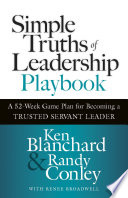

A clear and compelling vision is essential for effective leadership. Leaders must articulate a vision that resonates with their team and aligns with the organization's goals. This vision serves as a guiding star, providing direction and motivation. The book outlines strategies for developing and communicating a vision that inspires action. A strong vision not only helps in decision-making but also fosters a sense of purpose among team members, encouraging them to contribute towards a common goal.
Continue readingAuthenticity in leadership is crucial for building trust and credibility. Leaders who are genuine and true to themselves foster a culture of openness and honesty within their teams. This idea emphasizes that leaders should embrace their unique qualities and values rather than conforming to a perceived mold of what a leader should be. When leaders are authentic, they inspire their teams to be themselves, which can lead to increased engagement and productivity. Authenticity also helps in navigating challenges, as teams are more likely to rally around a leader who is transparent about their struggles and successes.
Continue readingEffective leaders empower their team members by delegating responsibilities and encouraging autonomy. This idea stresses that leaders should trust their teams to make decisions and take ownership of their work. By empowering others, leaders can foster a sense of accountability and innovation within their teams. The book discusses the balance between providing guidance and allowing freedom, highlighting that delegation is not just about offloading tasks, but about developing future leaders and building team capacity.
Continue readingCommunication is a cornerstone of effective leadership. The book emphasizes the need for clear, consistent, and open communication channels within teams. Leaders should not only convey information but also listen actively to their team members. This two-way communication fosters a culture of inclusivity and respect, which can enhance team dynamics. The book provides practical tips for improving communication skills, such as active listening, providing constructive feedback, and being approachable.
Continue readingIn a rapidly changing world, adaptability is a key trait for leaders. The book discusses the importance of being resilient in the face of challenges and uncertainties. Leaders must be willing to pivot and adjust their strategies as needed while maintaining their core values and vision. This idea encourages leaders to embrace change as an opportunity for growth rather than a setback. Resilience also involves supporting team members through challenges and fostering a culture that views failures as learning experiences.
Continue readingStrong relationships are fundamental to effective leadership. The book highlights the importance of building rapport with team members, stakeholders, and peers. Leaders should invest time in understanding their team members' strengths, weaknesses, and motivations. Building relationships creates a supportive environment where team members feel valued and understood. This idea also extends to networking and collaboration, emphasizing that successful leaders leverage their relationships to achieve organizational goals.
Continue readingThe journey of leadership is one of continuous learning. The book encourages leaders to seek out opportunities for personal and professional development. This includes staying updated with industry trends, seeking feedback, and learning from experiences, both successes and failures. Leaders should model a growth mindset, demonstrating to their teams that learning is a lifelong process. This commitment to growth not only enhances the leader's capabilities but also inspires team members to pursue their own development.
Continue reading